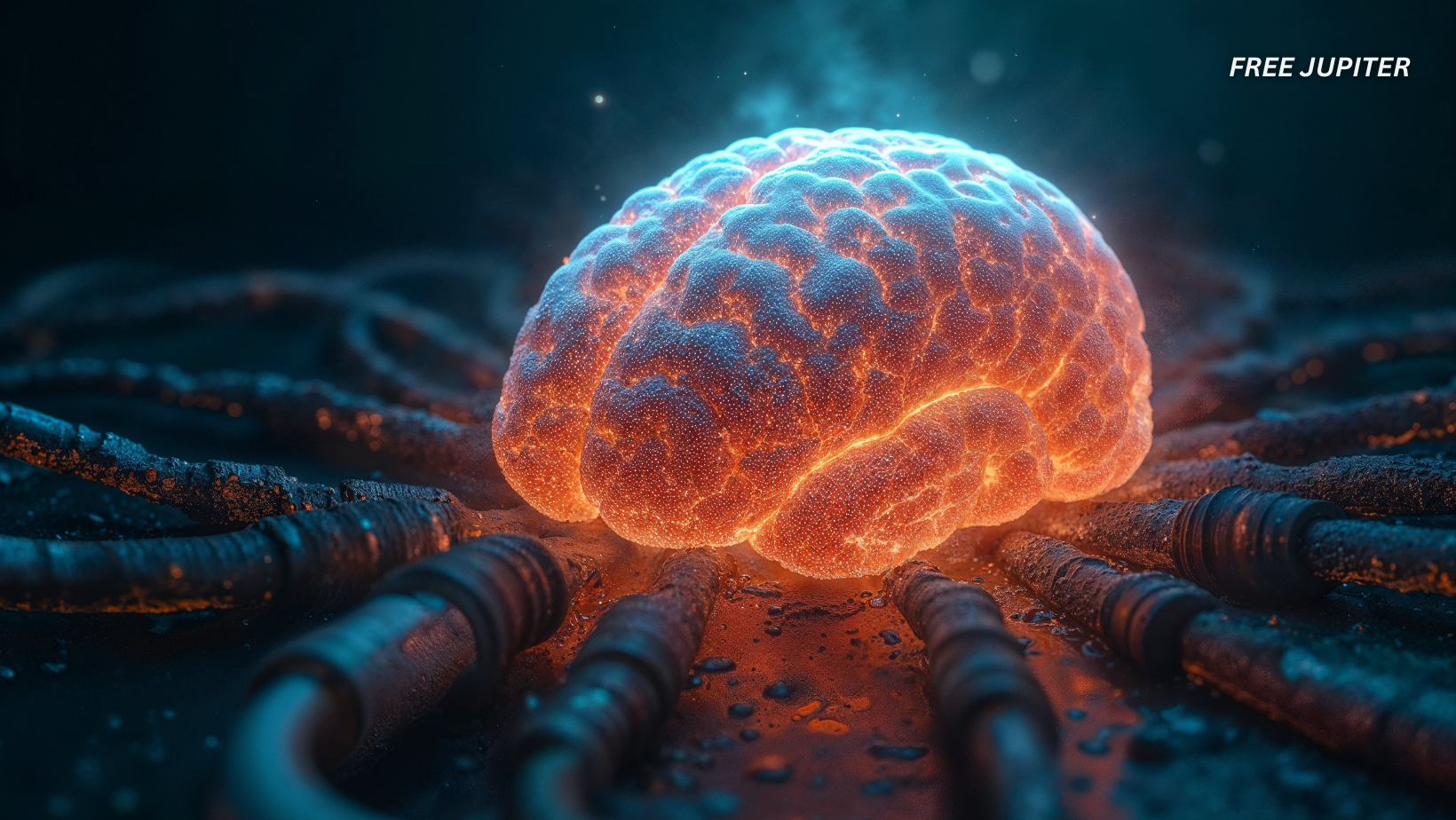Friendly Note: FreeJupiter.com shares general info for curious minds 🌟 Please fact-check all claims—and always check health matters with a professional 💙
What if the secret to being smart wasn’t just about studying hard or having a good memory, but about how well your brain keeps time with itself?
According to a fascinating new study, your brain may have its own hidden rhythm—a sort of internal pulse—that plays a key role in how intelligent you are. This rhythm, known as theta connectivity, could be a clue to how your brain manages complex tasks, handles distractions, and switches gears in real time. And best of all, it’s not science fiction. It’s biology, measured and observed.
Let’s unpack what that means, in plain language.
Your Brain’s Background Beat: What Is Theta Connectivity?
Picture your brain as an orchestra. Different instruments (or brain regions) handle different parts of the music—some deal with language, some with visuals, others with movement or memory. For the music (i.e., your thoughts) to sound smooth and make sense, these sections need to stay in sync.
That’s where theta waves come in. These are brainwaves that pulse slowly—around 4 to 8 times per second. They tend to appear when we’re deeply focused, meditating, daydreaming, or trying to solve problems. When these theta waves show up across different parts of the brain at the same time, it’s a sign those areas are working together.
This phenomenon is what researchers call theta connectivity—the brain syncing up its different parts through this shared rhythm. And according to the latest findings, the better your brain syncs in this way, the more mentally agile you may be.
How Scientists Measured Brain Rhythms and Intelligence
To dive deeper into this connection, psychologist Dr. Anna-Lena Schubert and her team at Johannes Gutenberg University Mainz in Germany gathered 148 volunteers between the ages of 18 and 60.
First, the participants were asked to take a series of tests to measure their intelligence and memory. These included things like:
- Problem-solving puzzles
- Logic questions
- Tasks that tested short-term memory
Then came the fun part: the participants put on EEG caps—devices that detect electrical activity in the brain through the scalp. Imagine a swim cap crossed with a futuristic hairnet, dotted with sensors. While wearing these caps, each participant completed three different mental challenges. All were designed to test how quickly they could switch between tasks.
Read more: Breakthrough: The FDA Has Just Approved A New Injection to Prevent HIV
The Brain-Bending Tasks
1. The Number Test
They were shown random numbers between 1 and 9. Depending on the rules of the moment, they had to decide if the number was:
- Greater or less than five
- Odd or even
Sounds simple, right? The twist: the rule kept changing throughout the task. So one moment you’re judging size, the next you’re checking odd/even status. It’s like mental ping-pong.
2. The Shape Test (Navon Figures)
Participants were shown large shapes made up of tiny smaller shapes—for example, a big square made of small triangles. They had to quickly identify:
- The overall shape
- Or the smaller components that formed it
Again, the rule switched as the test progressed. It was a challenge in shifting focus from the forest to the trees—and back again.
3. The Pair Test
Here, people saw a letter and a number together (e.g., A5). Depending on the current rule, they had to decide:
- Whether the number was more or less than five
- Or whether the letter was a vowel or a consonant
The rules changed without warning, pushing participants to stay mentally nimble.
What the Results Revealed
So what did the brain scans show?
As participants worked through the shifting tasks, their theta connectivity—that synchronized brain activity—rose and fell. And here’s the kicker: the people who scored higher on the original intelligence tests showed significantly stronger theta connectivity during the hardest parts of the tasks.
This means their brains were better at coordinating when it mattered most. Not just during moments of intense focus, but also while shifting between rules, juggling new information, and keeping distractions at bay.
Dr. Schubert explained it this way: “People with stronger midfrontal theta connectivity are often better at maintaining focus and tuning out distractions—whether that’s ignoring your phone while working, or reading a book on a noisy train.”
Adaptability Beats Attention
Interestingly, the study showed that being smart wasn’t just about intense focus or long attention spans. Instead, the key was flexibility—the ability to rapidly adapt to changes, switch strategies on the fly, and reconfigure mental priorities.
The midfrontal part of the brain, it turns out, acts like a team manager. It communicates with other regions to decide what needs doing now, how to do it, and when to stop or shift gears. And when this region syncs up well with the rest of the brain using theta waves, everything runs smoother.
The researchers wrote:
“Only theta connectivity during response-related processes—not during the initial cue—was linked with cognitive abilities.”
In simple terms: it’s not just preparing to act that matters. It’s executing the action effectively—under pressure, and on the spot—that defines high cognitive performance.
How This Might Shape Future Brain Research
These findings add an exciting piece to the puzzle of how intelligence works. Rather than being some static “IQ number” you’re born with, intelligence may be better understood as a brain’s capacity to coordinate and adapt in real time.
And that has real-world implications.
Researchers hope this kind of work could one day lead to:
- Brain-based cognitive training (like exercise for your mental flexibility)
- New diagnostic tools for learning difficulties or cognitive decline
- Better insights into conditions like ADHD, autism, or age-related memory loss, where mental switching and attention are affected
Dr. Schubert cautions that we’re still a long way from using this in clinics or classrooms. But the groundwork is here, and it’s promising.
“Our study offers important groundwork for understanding how intelligence functions at a neural level.”
Read more: Scientists Develop New Urine Test Can Detect Pancreatic and Prostate Cancer Early—with High Accuracy
This Isn’t the Only Study Pointing to Brain Rhythms and Smarts
The idea of brainwaves playing a role in intelligence isn’t new. For example, a 2020 study from MIT showed that theta rhythms help people hold onto relevant information while working on difficult puzzles. Those who had stronger theta activity were more successful at logic games and mental math.
In other words, multiple studies now point to the same conclusion: intelligence may come down not just to what you know, but how well your brain syncs itself when the pressure is on.
The Takeaway: Your Brain Has Rhythm—And It Might Be the Beat of Brilliance
Next time you’re stuck on a riddle, juggling work tasks, or trying to focus in a noisy café, just remember: your brain isn’t just thinking—it’s orchestrating. And if it’s playing its internal rhythm just right, you might be smarter than you think.
Theta waves could be the brain’s way of drumming up mental sharpness—literally. The better your brain stays in sync, the better it might handle anything life throws at it.
Disclaimer: The information in this article is for general informational purposes only and is not medical advice. We are not doctors, and this website is run as a family hobby project. Always consult a qualified healthcare professional before making decisions about your health. Please fact-check any claims and use this content as a starting point, not a substitute for professional guidance.










